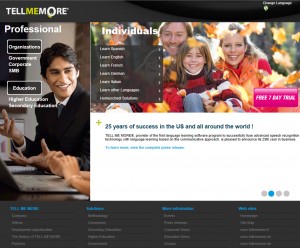
Tell Me More, the web service that the World Language department used this past summer for middle and upper school assignments, brands itself as “the first language learning software to successfully fuse advanced speech recognition technology with language learning.” But is it really that successful?
“We decided to use Tell Me More based on some negative feedback from upper level students last year,” said World Language department chair Josefina Paolello. “They had problems trying to understand the assignments they had to complete on their own.” Paolello explained, “It allows students to practice on different types of skills and all at their own level.” She added, “It also shows students cultural videos and has many different practice activities. It’s much more engaging.” Paolello also said that the program allows students easy access to definitions of foreign words, something not so easy with physical textbooks.
Many MFS students agreed that the software was interesting. “I found that it held my interest well enough for me to get the summer assignment done without too much difficulty,” said junior Roy Thorstensen, “but, like many others I found the voice recognition software to be poor and not work properly most of the time.” Many students, like Thorstensen, discovered over the summer that the voice recognition software did not work very well. Senior Shanelle Jones agreed. “Sometimes the way I was taught to say something was different from the way they wanted me to say it,” she said, “and they often wouldn’t tell me what was wrong, either.”
Other students did not think that Tell Me More had any redeeming qualities. “Oh, it was awful,” said senior Sarah Master bluntly. “It loved to break.”
“There are still some problems,” acknowledged Paolello, “and we’re meeting with the people who run the program … to discuss them.” Based on students’ opinions, it seems that the program has a worthwhile premise and redeeming qualities, but it still needs work before it lives up to the claims on its website.





